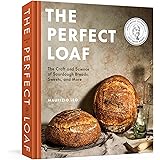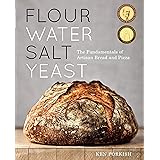The quest for the perfect cup of tea often feels like an elusive journey, a pursuit fraught with common missteps that prevent us from truly experiencing the beverage’s full potential. As the accompanying video provocatively suggests, many of us might be approaching our daily brew with habits that, while well-intentioned, fall short of optimizing flavor and aroma. This isn’t merely about personal preference; it delves into the intricate chemistry of tea leaves, water, and temperature, a nuanced science often overlooked in the rush of morning rituals.
To truly unlock the sophisticated character of your preferred tea, a deeper understanding of the brewing process is essential, extending far beyond the basic steeping time. By refining each stage of preparation, from selecting the right leaves to understanding the subtle dance of extraction, you can elevate a simple cup into an exceptional sensory experience. This comprehensive guide will dissect the critical elements involved in crafting an unparalleled brew, ensuring every sip is a testament to mindful preparation and expert execution.
Optimizing Your Tea Experience: Beyond the Brew Time
The video humorously highlights a common misconception: that simply steeping for “around 3 minutes” is the be-all and end-all of tea preparation. While a three-minute infusion serves as a reasonable starting point for many black teas, it represents just one variable in a complex equation determining a tea’s ultimate expression. Imagine if a chef only considered cooking time without regard for ingredient quality, precise temperature, or seasoning; the result would invariably be suboptimal. Similarly, achieving a truly exceptional cup demands meticulous attention to several interconnected factors that influence the final liquor.
Recognizing the significance of these often-neglected aspects transforms tea making from a routine task into an art form, allowing for a personalized and consistently superior result. By delving into the scientific underpinnings of infusion, we can systematically address each component, moving past generic instructions to embrace a more precise and rewarding methodology. This journey into advanced tea brewing techniques empowers enthusiasts to consistently produce an outstanding beverage, cup after flavorful cup.
1. The Foundation of Flavor: Water Quality and Temperature
Water, comprising over 98% of your tea, arguably plays the most critical role in the final flavor profile, yet its quality is frequently underestimated. Using filtered, fresh water is paramount, as chlorine and other tap water impurities can drastically alter the tea’s delicate notes, often imparting an undesirable flatness or metallic undertone. Hard water, rich in minerals, can also inhibit proper extraction, leading to a duller, less vibrant infusion, whereas excessively soft water might over-extract, yielding a bitter brew.
Equally crucial is the water’s temperature, a variable that dramatically influences the extraction of specific compounds from the tea leaves. Boiling water (100°C/212°F) is generally ideal for robust black teas and Pu-erh, encouraging the full release of their bold, malty characteristics and potent tannins. However, delicate green and white teas, rich in amino acids and volatile aromatics, demand lower temperatures, typically ranging from 70-85°C (158-185°F), to prevent scorching the leaves and eliciting an astringent, bitter taste. Oolong teas, with their diverse oxidation levels, often thrive at temperatures between 85-95°C (185-205°F), a range that expertly balances their complex floral and mineral notes. Herbal infusions, often containing various plant materials, usually benefit from boiling water to ensure maximum extraction of their beneficial compounds and flavors.
2. Precision in Portioning: The Leaf-to-Water Ratio
Achieving the optimal concentration of tea liquor is fundamental to a balanced and flavorful cup, making the leaf-to-water ratio a critical, yet often improvised, consideration. A general guideline suggests using approximately 2-3 grams of tea leaves (roughly one teaspoon) per 200ml (7 oz) of water, but this benchmark requires precise adjustment based on the specific tea type and personal preference. Imagine trying to bake a cake without accurately measuring your flour; the outcome would be predictably inconsistent.
Finely broken tea leaves, commonly found in tea bags, possess a larger surface area, resulting in faster and more intense extraction, thus requiring slightly less tea or shorter steeping times. Conversely, whole leaf teas, particularly those with large, unfurled leaves, demand a more generous quantity to compensate for their slower infusion rate and to fully express their nuanced character. Experimentation within these parameters, perhaps starting with 2.5 grams per 200ml and adjusting incrementally, empowers the connoisseur to dial in their ideal strength and flavor profile, moving beyond generic advice to a truly bespoke brewing method.
3. The Vessel’s Vocation: Choosing the Right Teaware
The vessel in which your tea is steeped is far more than a mere container; it profoundly impacts temperature retention, infusion dynamics, and ultimately, the aesthetic and aromatic experience. A pre-warmed teapot or cup, preferably ceramic or porcelain, helps maintain the ideal brewing temperature, preventing a sudden drop that can shock the leaves and hinder proper extraction. Imagine trying to heat water in a cold pan; the initial heat loss would delay the boiling process, similarly affecting tea infusion.
Furthermore, the shape and material of the steeping vessel can influence how the leaves unfurl and circulate, which is vital for an even extraction. For example, a wider, shallower teapot might be excellent for green teas that benefit from a quick, even steep, while a taller, narrower pot could be ideal for black teas requiring sustained heat. Glass teaware offers the unique advantage of visually appreciating the mesmerizing unfurling of whole leaf teas, enhancing the overall enjoyment of the ritual. The choice of teaware is not just about utility; it is an extension of the brewing philosophy, contributing significantly to the full sensory appreciation of perfect tea brewing.
4. Beyond the Steep: Decanting and Second Infusions
The video’s punchline—”Coffee up!”—humorously sidesteps the crucial step often overlooked after the initial steep: the complete separation of leaves from the liquor. Allowing tea leaves to over-steep, even by a minute, can lead to the excessive extraction of bitter tannins, resulting in an astringent and less palatable brew, irrespective of the initial perfect timing. Decanting the entire liquid into a separate serving vessel immediately after the ideal steeping duration is vital for stopping the infusion process precisely.
For high-quality whole leaf teas, especially Oolongs, Pu-erhs, and certain green teas, the magic truly begins with subsequent infusions. These exceptional leaves are designed for multiple steepings, each revealing different layers of complexity and subtle shifts in flavor and aroma. Imagine savoring a fine wine that evolves with each sip; similarly, subsequent tea infusions offer a journey of discovery, often delivering a sweeter, smoother, or more nuanced character than the initial steep. By extending the steeping time slightly for each successive brew, you can explore the full spectrum of a tea’s potential, transforming a single portion of leaves into several distinct and delightful cups, a hallmark of sophisticated tea appreciation and a core principle of perfect tea brewing.











